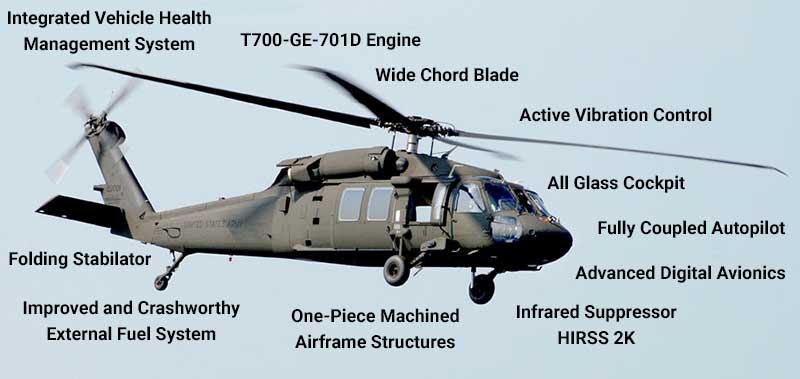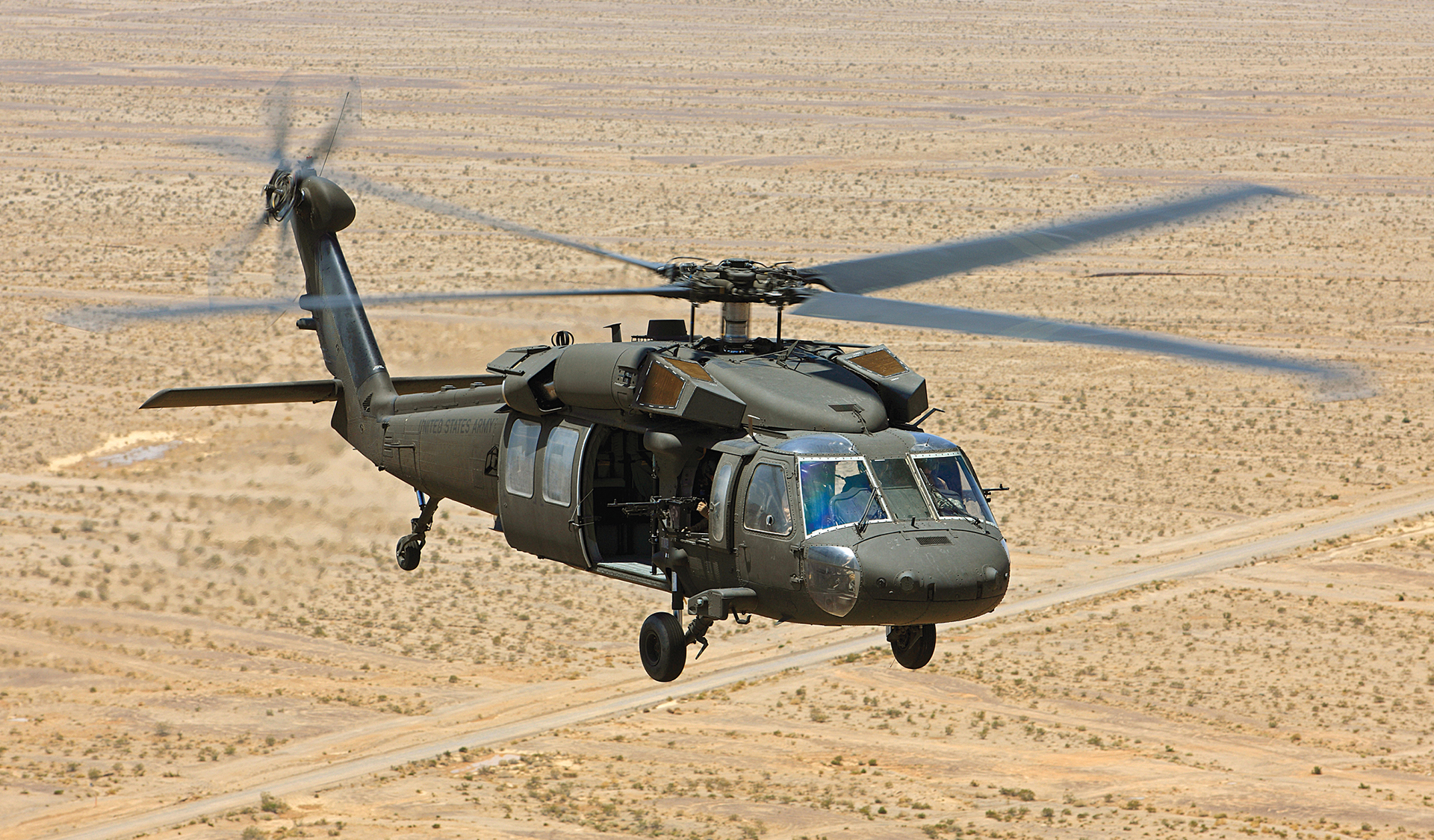Mastering the Skies: UH 60 Helicopter Maintenance Checklist
Mastering the Skies: UH 60 Helicopter Maintenance Checklist
Blog Article
Comprehending the Mechanics and Engineering Behind Uh 60 Helicopters
The UH-60 helicopter, frequently called the Black Hawk, stands as a pinnacle of modern-day rotorcraft technology, personifying a blend of durable engineering and complex mechanics. From its creation to its current versions, the advancement of this aircraft showcases a combination of advancement and practicality. As we peel off back the layers of the UH-60's design, a globe of complex systems and precise design comes to light. Understanding the technicians and engineering behind this versatile aircraft introduces a world where accuracy meets power, and where each element plays an essential function in achieving trip.
History of UH-60 Helicopters
The history of UH-60 helicopters traces back to the late 1970s when the USA Military sought a functional and innovative utility helicopter to replace its aging fleet. In feedback to this demand, the Sikorsky Aircraft Corporation developed the UH-60 Black Hawk helicopter. Presented in 1979, the UH-60 swiftly ended up being a staple in military procedures as a result of its remarkable capacities.
The UH-60 was developed to excel in a variety of missions, including army transportation, medical evacuation, digital war, and special procedures. Its capacity to adjust to different functions made it a beneficial asset to the united state Army and other army pressures around the globe
For many years, the UH-60 platform has gone through several upgrades and variants to enhance its performance and equal evolving goal needs. These helicopters have actually seen considerable service in disputes such as the Gulf War, Afghanistan, and Iraq, showcasing their integrity and adaptability in diverse operational atmospheres. The UH-60's rich history is a testimony to its enduring heritage as a premier energy helicopter.

Engine and Power Solutions
Using advanced propulsion technology, UH-60 helicopters are geared up with advanced engine and power systems to ensure optimum efficiency and integrity in a series of functional situations. The UH-60, typically called the Black Hawk, is powered by 2 General Electric T700-GE-701D engines, each with the ability of delivering up to 1,940 shaft horse power. These turboshaft engines supply the required thrust for the helicopter to accomplish its objectives successfully, including army transport, medical evacuation, and combat support.

Blades System and Aerodynamics
How do the rotor system and aerodynamics of UH-60 helicopters add to their operational efficiency and flight capabilities? The rotor system of the UH-60 helicopter plays a vital duty in supplying lift and propulsion. The UH-60 includes a four-bladed, completely verbalized rotor system that enables high maneuverability and stability throughout trip. This layout enables the helicopter to carry out a vast array of missions, from transport and medical evacuation to battle procedures.
The rules of aerodynamics additionally play a key role in the performance of UH-60 helicopters. The structured fuselage and rotor blade layout minimize drag, enabling the helicopter to achieve greater speeds and better gas effectiveness. The aerodynamic layout of the UH-60 likewise contributes to its capacity to run in diverse environmental problems, consisting of high elevations and hot temperatures.
Avionics and Trip Control Equipment

In its elaborate control with the blades system and aerodynamics of UH-60 helicopters, the avionics and flight control systems develop a crucial network of innovations forming the airplane's operational capabilities. In the UH-60, these systems consist of electronic display screens, communication radios, General practitioner navigating, weather radar, and auto-pilot systems.
The trip control systems of the go UH-60 are responsible for equating the pilot's inputs right into the suitable adjustments to the rotor system, making certain stable trip and ability to move. These systems contain hydraulic actuators, servos, and computer systems that work together to manage the tail and primary blades, in addition to various other flight control surfaces. By exactly handling the helicopter's flight dynamics, these systems enable pilots to carry out a large range of missions, from transport and search-and-rescue to combat operations, with accuracy and self-confidence.
Duty and Applications in Aeronautics
The duty and applications of avionics and trip control systems in air travel are important to making sure the effective and safe procedure of aircraft, including UH-60 helicopters. Avionics systems in UH-60 helicopters encompass a range of electronic systems that help in navigation, communication, tracking, and managing different airplane functions. These systems consist of digital display screens, autopilot systems, interaction radios, general practitioner navigating devices, and weather radar. Flight control systems play a critical role in maneuvering the helicopter airborne, preserving stability, and guaranteeing accurate activities. The fly-by-wire modern technology utilized in modern UH-60 helicopters converts pilot inputs right into electronic signals, which are after that translated by the trip control computer systems to adjust the airplane's control surfaces. Additionally, these systems include security features such as auto-pilot settings, terrain recognition alerting find more info systems, and stability augmentation systems to boost the total safety and security and operational capacities of the UH-60 helicopters in different objectives, including troop transportation, medical discharge, search and rescue, and aerial firefighting.
Final Thought
In verdict, the UH-60 helicopter is a versatile aircraft with a rich history and progressed design. Its engine and power systems, blades system, the rules of aerodynamics, avionics, and trip control systems all function with each other to make it a trusted and reliable device.
In its elaborate coordination with the rotor system and aerodynamics of UH-60 helicopters, the avionics and flight control systems form an important network of innovations shaping the aircraft's operational capabilities.The trip control systems of the UH-60 are liable for converting the pilot's inputs right into the proper modifications to the rotor system, making sure secure trip and ability to move. Avionics systems in UH-60 helicopters include a variety of electronic systems that aid in navigating, interaction, monitoring, and controlling various airplane features. In addition, these systems integrate safety and security attributes such as my latest blog post auto-pilot modes, surface understanding cautioning systems, and security enhancement systems to improve the overall safety and security and functional capabilities of the UH-60 helicopters in various goals, including troop transportation, clinical emptying, search and rescue, and airborne firefighting.
Its engine and power systems, blades system, aerodynamics, avionics, and trip control systems all work together to make it a trusted and effective equipment.
Report this page